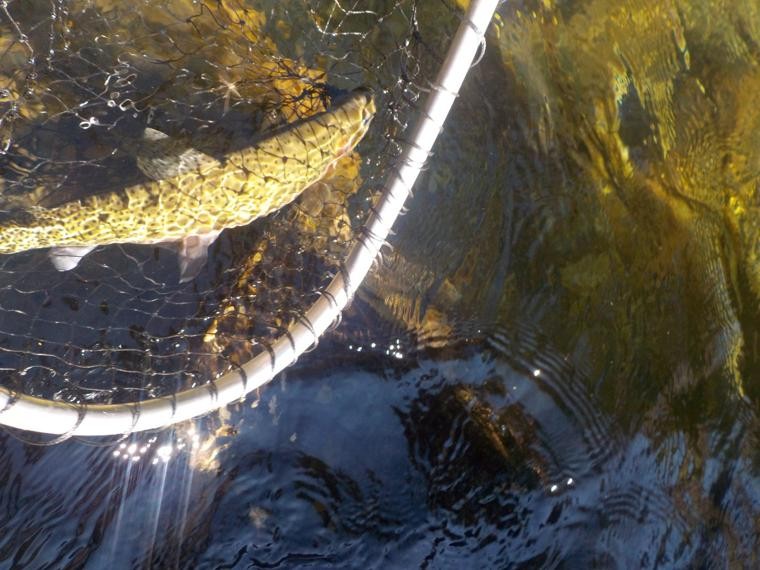If you’re new to Idaho and don’t know how to fly fish, or maybe you’ve lived here for all of your life and just never learned how yet, it’s time to learn. I’ve always said that bowhunting is cool. But it can be tough. But fly fishing is cool, and it really works. You can catch a ton of trout with a fly rod.
Periodically I do a 101 article but this one is really going to be a 101 article. There is just so much to learn about fly fishing I could write a book on it. I learn something every trip. I fly fish a lot. I teach fly fishing seminars and yet I don’t really consider myself a very good fly fisherman. I think fly fishing is a lifelong quest.
The best way to get started is to have your dad, uncle or a buddy teach you. If you don’t have someone like that to help you, then go to some seminars and take a class. It will take a while to get proficient, so don’t get frustrated and give up.
I love fly fishing in the backcountry, but if you’re a newbie it can be frustrating on tight brushy little rivers. So start off learning on open rivers or maybe practice on an open lake.
Let’s start off with a few basics. Use the Dr Pepper cast. Remember the old Dr Pepper advertisements? Drink a DP at 10 and 2? What that means is don’t lower your arm below the 2 o’clock position when casting forward or below the 10 o’clock position on your back cast.
If you’re going farther than these two positions, then you’re bending your wrist. You want to keep your wrist straight. The reason it is important to use these two points is that otherwise you’ll be beating the water to a froth and spooking the fish as well as drowning your fly.
I always teach people to not look at the water where you’re casting but to imagine that you’re throwing your fly at the top of an imaginary 6-foot tall pine tree. That way you won’t hit the water. And when you cast the last time, still focus on that spot. And on your last cast, ever so slightly start to bring your rod tip back so the line doesn’t pile up in a heap in one spot. You want it to lay out straight.
As you cast, be watching behind you so you don’t hang up behind you. This is an issue on brushy rivers or if the bank rises sharply behind you. Which brings up the question: What if there is brush 10 feet behind you and you want to cast out 20 feet? All you have to do is get 10 feet of line out and then when you make your final cast, shoot out another 10 feet of line. You can also have line lying at your feet on the water and do a roll cast.
You need to learn to mend your line and use the current to pull your fly where you want it to be. Here’s what I mean by all of this. Let’s say my fly is drifting downstream and I want it to go another 1 ½-feet to the left. All I have to do is flip my rod tip and throw the floating line over to the left. It will then float up close to the edge of the bank and make the fly drift over with it. Make sense?
Dry flies are ones that float on the surface and wet flies are below the surface. Everyone loves fishing with dry flies. You get a visual rush when a trout slams your fly but I was taught that 80 percent of the aquatic life is under the surface so you have to learn how to use wet flies.
I’ve always jokingly said that if I have someone to tell me which fly to use and how to use it then I’m a pretty good fly fisherman. But that’s 90 percent of fly fishing. You need to learn the life cycles of flies. Nymphs are on the bottom, emergers have just hatched and are floating up through the water column to the surface and dries float on the surface drying off their wings and are about to take off. If you want to know more about entomology you may want to check out these guys: www.thecatchandthehatch.com.
You can tell what stage the flies are in by how the fish are feeding. Until you learn the stages, go to your local fly shop and ask them which flies to use for where you’ll be fishing (and it varies throughout the day). Well, we’re out of space and have barely gotten started.
Tom Claycomb lives in Idaho and has outdoors columns in newspapers in Alaska, Idaho, Utah, Nevada, Colorado and Louisiana. He also writes for various outdoors magazines and teaches outdoors seminars at stores like Cabela’s, Sportsman’s Warehouse and Bass Pro Shop.



